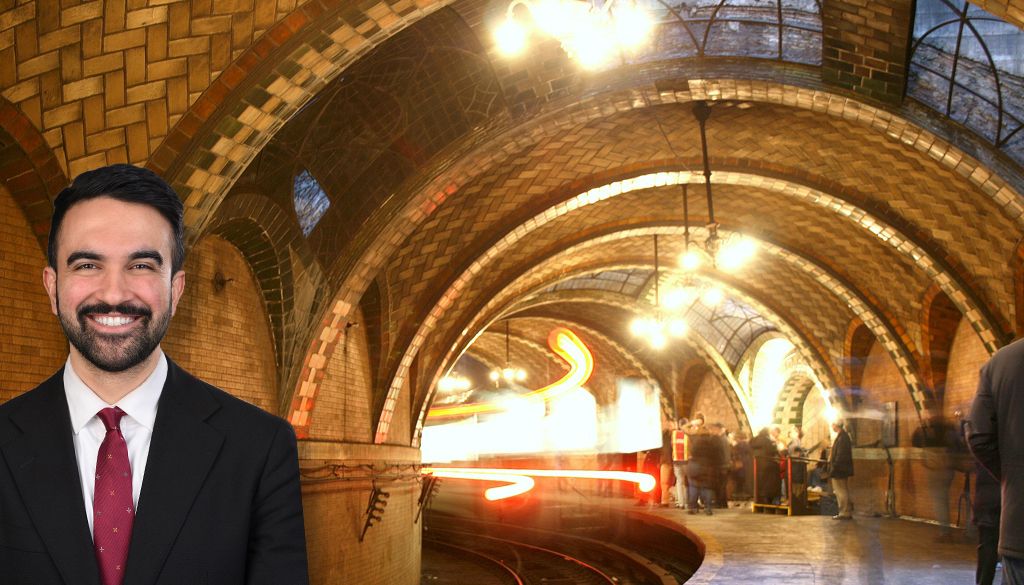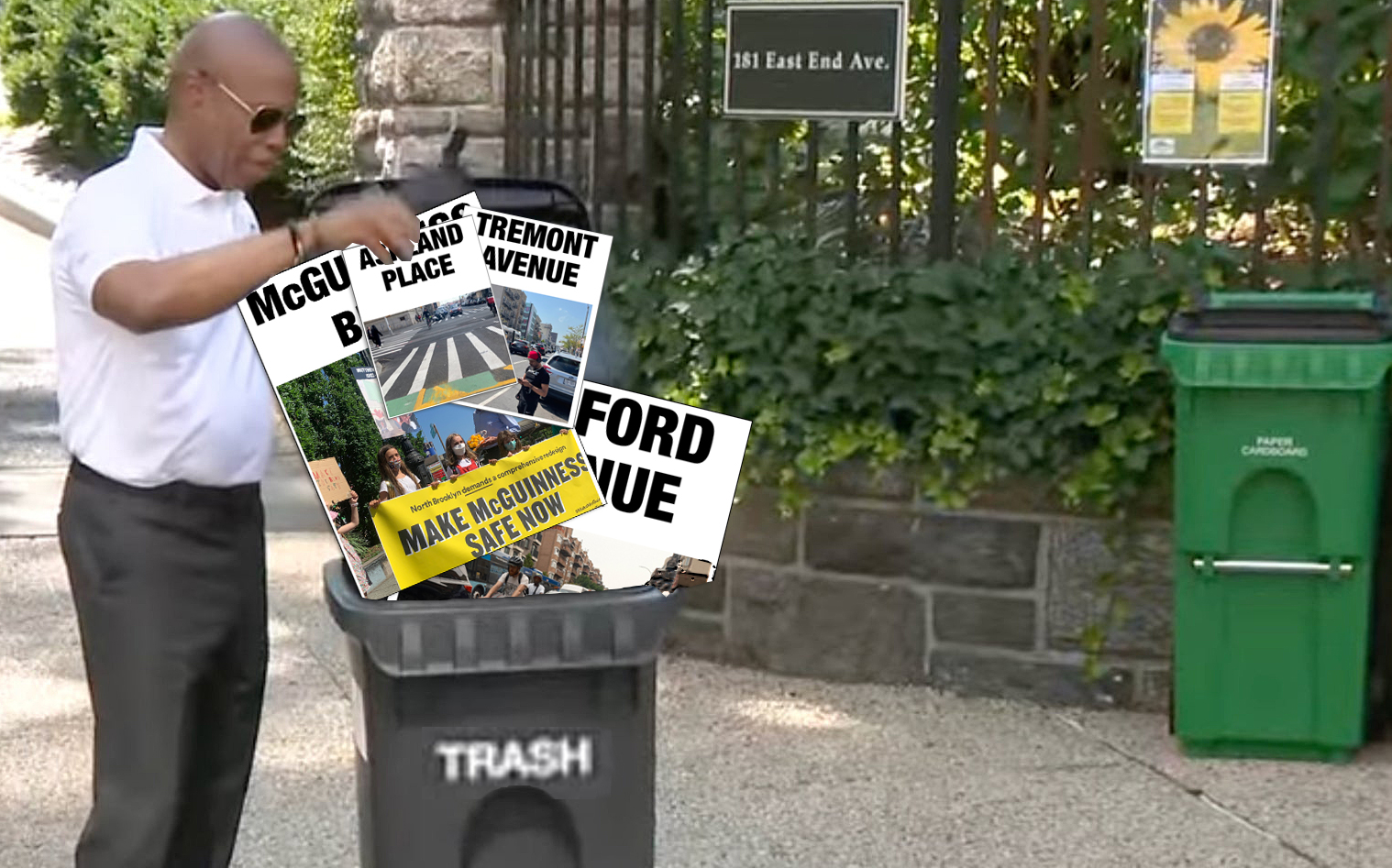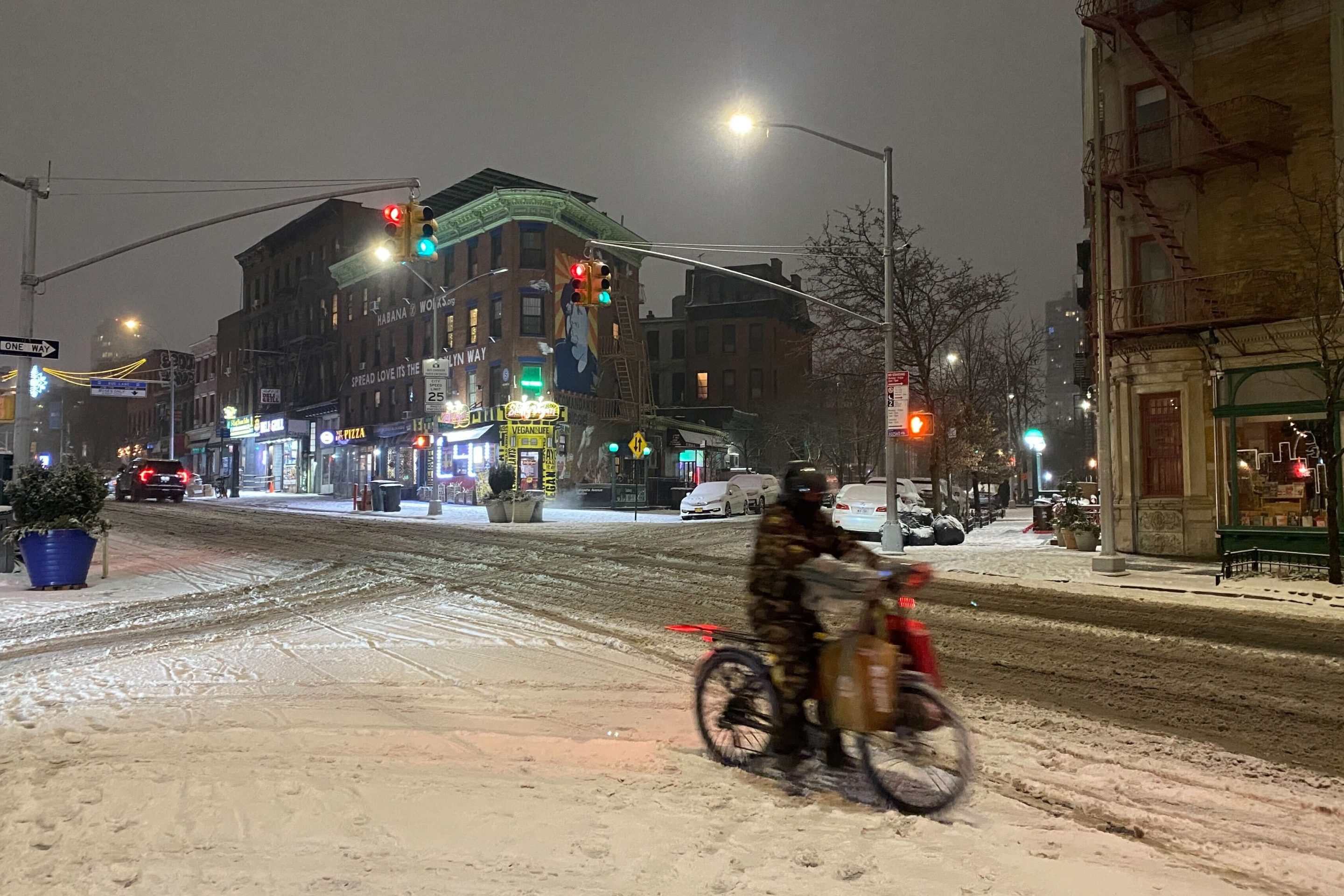Safety last.
Mayor Adams can go ahead and remove three blocks of the protected bike lane his administration installed on Bedford Avenue in October, even though his own Transportation Department says the move will make the roadway less safe, a state appellate court ruled on Monday.
Plaintiffs had hoped to stop Adams from reverting the bike path to an unprotected lane, arguing that doing so would lead to more traffic crashes and violated city rules requiring advance notice for major transportation projects.
The Adams administration had other ideas, however, insisting in court filings last week that statistics showing a drop in crashes since the protected bike lane went in did not actually reflect the improved safety along the corridor.
DOT has installed protected bike lanes across the city for years because of studies from New York City and elsewhere showing they lead to fewer traffic deaths and injuries for all road users, not just cyclists. That demonstrated effectiveness was part of the reason that the state's highest court ruled in 2017 that the city could be held legally responsible for not redesigning streets it knew to be unsafe.
"By reverting a safe street to a dangerous one, Mayor Adams is exposing the City of New York, and as a result, all taxpayers, to significant financial and legal liability when New Yorkers are inevitably hit, seriously injured, or killed on Bedford Avenue," Alexa Sledge, communications director for Transportation Alternatives, said in a statement after Monday's order from judges Cheryl E. Chambers, Linda Christopher, Carl Landicino and Phillip Hom.
"The city’s legal liability has been firmly established in court documents filed by his own Department of Transportation," said Sledge. "Settling lawsuits isn’t cheap, and New York City taxpayers will be on the hook for the mayor’s blatantly political decision-making."
Adams announced in June that he would remove the three blocks of safer bike lanes after complaints from Hasidic community in the area, whose votes he's courting ahead of November's mayoral election.
Rather than figuring out a way for pedestrians and cyclists to safely co-exist in the new bike lane design, Adams threw in the towel.
Hizzoner's case for removing the bike lane, as articulated by city lawyers in court, effectively repudiated years of policymaking by city officials including the mayor himself.
The city variously claimed that it was powerless to stop illegal parking or get school bus drivers to drop off students at bus stops, that removing a protected bike lane didn't increase the amount of space for motor vehicles and that the city's own data showed safety improvements on the corridor could not be trusted.
The lawyer representing a Crown Heights father and his 13-year-old son who had sued the city to protect the bike lane, issued a scathing denouncement of the city effort.
"This ruling is unfortunate but not unexpected as there is a very high bar for granting an injunction," said attorney Peter Beadle. "However, this does not mean the mayor should move forward. ... Instead of taking an action that will make everyone moving through that part of Bedford Avenue dramatically less safe, he can instead allow DOT to implement the alternatives they devised in the June 2025 report and keep the protected bike lane and the safer street geometry. It would be tragic and absurd to make everyone on Bedford Avenue less safe, waste taxpayer money removing a lane so recently installed and open the city to potential liability for future crashes."
After initial publication of this story, City Hall spokesperson Sophia Askari sent over a statement that did not answer our question — about the timing of the removal of the lane — but reiterated what City Hall has said previously.
“After several dangerous incidents — many of which involved children — the Adams administration listened to the community’s concerns and moved to reconfigure the bike lane to its original model while still maintaining safety measures,” the statement said, calling the back-and-forth "unnecessary."
It is worth noting that the city's legal argument for the right to tear out the bike lane referred to ambulance reports that the court documents did not actually provide.
"Overall injuries among cyclists and pedestrians were down 47 percent in the portion of the Bedford Avenue at issue following the 2024 redesign [but] not all collisions are reported to police," the city wrote in its filing.
"The community commonly uses the private ambulance service Hatzalah, and DOT did not have full records from Hatzalah at the time it compiled its data."
Nonetheless, the city did not provide them in court, either.






